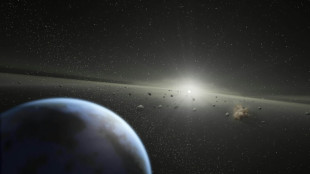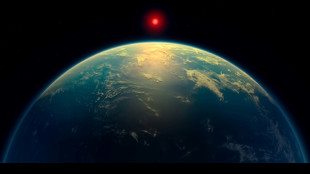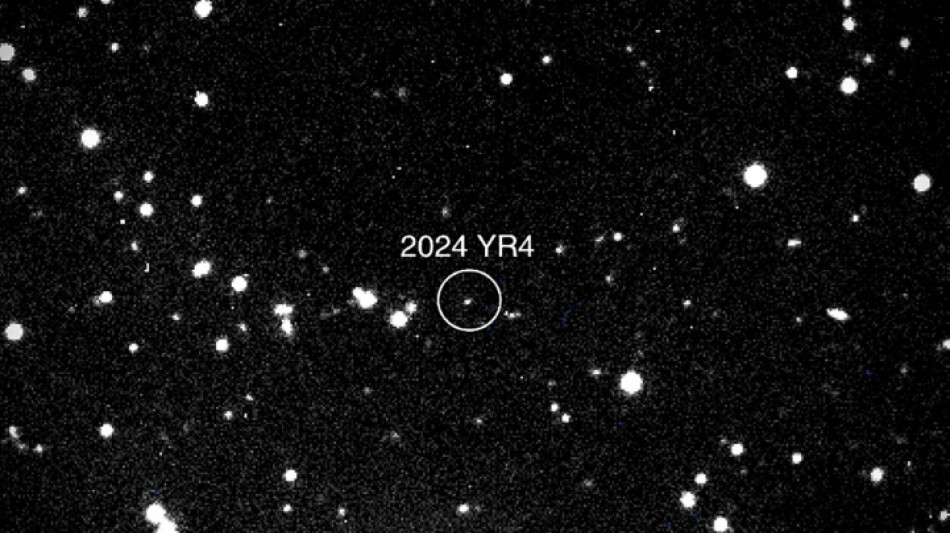
-
 Vance discusses migration during Vatican meeting with pope's right-hand man
Vance discusses migration during Vatican meeting with pope's right-hand man
-
Afghan FM tells Pakistan's top diplomat deportations are 'disappointment'

-
 British cycling icon Hoy and wife provide solace for each other's ills
British cycling icon Hoy and wife provide solace for each other's ills
-
Money, power, violence in high-stakes Philippine elections

-
 Iran, US hold second round of high-stakes nuclear talks in Rome
Iran, US hold second round of high-stakes nuclear talks in Rome
-
Japanese warships dock at Cambodia's Chinese-renovated naval base

-
 US Supreme Court pauses deportation of Venezuelans from Texas
US Supreme Court pauses deportation of Venezuelans from Texas
-
Pakistan foreign minister arrives in Kabul as Afghan deportations rise

-
 Heat and Grizzlies take final spots in the NBA playoffs
Heat and Grizzlies take final spots in the NBA playoffs
-
Iran, US to hold second round of high-stakes nuclear talks in Rome

-
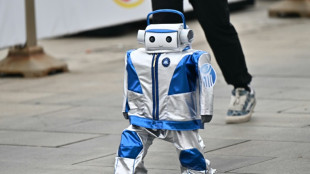 Humanoid robots stride into the future with world's first half-marathon
Humanoid robots stride into the future with world's first half-marathon
-
Migrant's expulsion puts Washington Salvadorans on edge

-
 Plan for expanded Muslim community triggers hope, fear in Texas
Plan for expanded Muslim community triggers hope, fear in Texas
-
Pakistan foreign minister due in Kabul as deportations rise
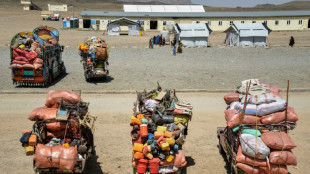
-
 White House touts Covid-19 'lab leak' theory on revamped site
White House touts Covid-19 'lab leak' theory on revamped site
-
Dodgers star Ohtani skips trip to Texas to await birth of first child

-
 US senator says El Salvador staged 'margarita' photo op
US senator says El Salvador staged 'margarita' photo op
-
Ford 'adjusts' some exports to China due to tariffs

-
 Thomas maintains two-shot lead at RBC Heritage
Thomas maintains two-shot lead at RBC Heritage
-
US to withdraw some 1,000 troops from Syria

-
 Four killed after spring storms wreak havoc in the Alps
Four killed after spring storms wreak havoc in the Alps
-
Spurs' Popovich reportedly home and well after 'medical incident'

-
 Trump goes to war with the Fed
Trump goes to war with the Fed
-
Celtics chase second straight NBA title in playoff field led by Thunder, Cavs

-
 White House site blames China for Covid-19 'lab leak'
White House site blames China for Covid-19 'lab leak'
-
Norris edges Piastri as McLaren top Jeddah practice

-
 Trump warns US could ditch Ukraine talks if no progress
Trump warns US could ditch Ukraine talks if no progress
-
Judge denies Sean 'Diddy' Combs push to delay trial

-
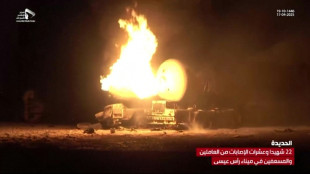 80 killed in deadliest US attack on Yemen, Huthis say
80 killed in deadliest US attack on Yemen, Huthis say
-
Lebanon says two killed in Israeli strikes in south

-
 Trump says US will soon 'take a pass' if no Ukraine deal
Trump says US will soon 'take a pass' if no Ukraine deal
-
F1 success is 'like cooking' - Ferrari head chef Vasseur

-
 Cycling mulls slowing bikes to make road racing safer
Cycling mulls slowing bikes to make road racing safer
-
Macron invites foreign researchers to 'choose France'

-
 Klopp 'happy' in new job despite Real Madrid rumours: agent
Klopp 'happy' in new job despite Real Madrid rumours: agent
-
Alcaraz into Barcelona semis as defending champion Ruud exits

-
 Vance meets Italy's Meloni before Easter at the Vatican
Vance meets Italy's Meloni before Easter at the Vatican
-
Evenepoel returns with victory in Brabantse Pijl

-
 Maresca confident he will survive Chelsea slump
Maresca confident he will survive Chelsea slump
-
Mob beats to death man from persecuted Pakistan minority

-
 Lebanon says one killed in Israeli strike near Sidon
Lebanon says one killed in Israeli strike near Sidon
-
Arsenal's Havertz could return for Champions League final

-
 US officials split on Ukraine truce prospects
US officials split on Ukraine truce prospects
-
Client brain-dead after Paris cryotherapy session goes wrong

-
 Flick demands answers from La Liga for 'joke' schedule
Flick demands answers from La Liga for 'joke' schedule
-
'Maddest game' sums up Man Utd career for Maguire

-
 Trial opens for students, journalists over Istanbul protests
Trial opens for students, journalists over Istanbul protests
-
Gaza rescuers say Israeli strikes kill 24 after Hamas rejects truce proposal

-
 'Really stuck': Ukraine's EU accession drive stumbles
'Really stuck': Ukraine's EU accession drive stumbles
-
'Not the time to discuss future', says Alonso amid Real Madrid links


A 'city-killer' asteroid might hit Earth -- how worried should we be?
A colossal explosion in the sky, unleashing energy hundreds of times greater than the Hiroshima bomb. A blinding flash nearly as bright as the Sun. Shockwaves powerful enough to flatten everything for miles.
It may sound apocalyptic, but a newly detected asteroid nearly the size of a football field now has a greater than one percent chance of colliding with Earth in about eight years.
Such an impact has the potential for city-level devastation, depending on where it strikes.
Scientists aren't panicking yet, but they are watching closely.
"At this point, it's 'Let's pay a lot of attention, let's get as many assets as we can observing it,'" Bruce Betts, chief scientist of The Planetary Society, told AFP.
- Rare finding -
Dubbed 2024 YR4, the asteroid was first spotted on December 27, 2024, by the El Sauce Observatory in Chile. Based on its brightness, astronomers estimate it is between 130 and 300 feet (40–90 meters) wide.
By New Year's Eve, it had landed on the desk of Kelly Fast, acting planetary defense officer at US space agency NASA, as an object of concern.
"You get observations, they drop off again. This one looked like it had the potential to stick around," she told AFP.
The risk assessment kept climbing, and on January 29, the International Asteroid Warning Network (IAWN), a global planetary defense collaboration,issued a memo.
According to the latest calculations from NASA's Jet Propulsion Laboratory, there is a 1.6 percent chance the asteroid will strike Earth on December 22, 2032.
If it does hit, possible impact sites include over the eastern Pacific Ocean, northern South America, the Atlantic Ocean, Africa, the Arabian Sea, and South Asia, the IAWN memo states.
2024 YR4 follows a highly elliptical, four-year orbit, swinging through the inner planets before shooting past Mars and out toward Jupiter.
For now, it's zooming away from Earth -- its next close pass won't come until 2028.
"The odds are very good that not only will this not hit Earth, but at some point in the next months to few years, that probability will go to zero," said Betts.
A similar scenario unfolded in 2004 with Apophis, an asteroid initially projected to have a 2.7 percent chance of striking Earth in 2029. Further observations ruled out an impact.
- Destructive potential -
The most infamous asteroid impact occurred 66 million years ago, when a six-mile-wide space rock triggered a global winter, wiping out the dinosaurs and 75 percent of all species.
By contrast, 2024 YR4 falls into the "city killer" category.
"If you put it over Paris or London or New York, you basically wipe out the whole city and some of the environs," said Betts.
The best modern comparison is the 1908 Tunguska Event, when an asteroid or comet fragment measuring 30-50 meters exploded over Siberia, flattening 80 million trees across 770 square miles (2,000 square kilometers).
Like that impactor, 2024 YR4 would be expected to blow up in the sky, rather than leaving a crater on the ground.
"We can calculate the energy... using the mass and the speed," said Andrew Rivkin, a planetary astronomer at Johns Hopkins Applied Physics Laboratory.
For 2024 YR4, the explosion from an airburst would equal around eight megatons of TNT -- more than 500 times the power of the Hiroshima bomb.
If it explodes over the ocean, the impact would be less concerning, unless it happens near a coastline triggering a tsunami.
- We can stop it -
The good news, experts stress, is that we have plenty of time to prepare.
Rivkin led the investigation for NASA's 2022 DART mission, which successfully nudged an asteroid off its course using a spacecraft -- a strategy known as a "kinetic impactor."
The target asteroid posed no threat to Earth, making it an ideal test subject.
"I don't see why it wouldn't work" again, he said. The bigger question is whether major nations would fund such a mission if their own territory wasn't under threat.
Other, more experimental ideas exist.
Lasers could vaporize part of the asteroid to create a thrust effect, pushing it off course. A "gravity tractor," a large spacecraft that slowly tugs the asteroid away using its own gravitational pull, has also been theorized.
If all else fails, the long warning time means authorities could evacuate the impact zone.
"Nobody should be scared about this," said Fast. "We can find these things, make these predictions and have the ability to plan."
M.Betschart--VB

